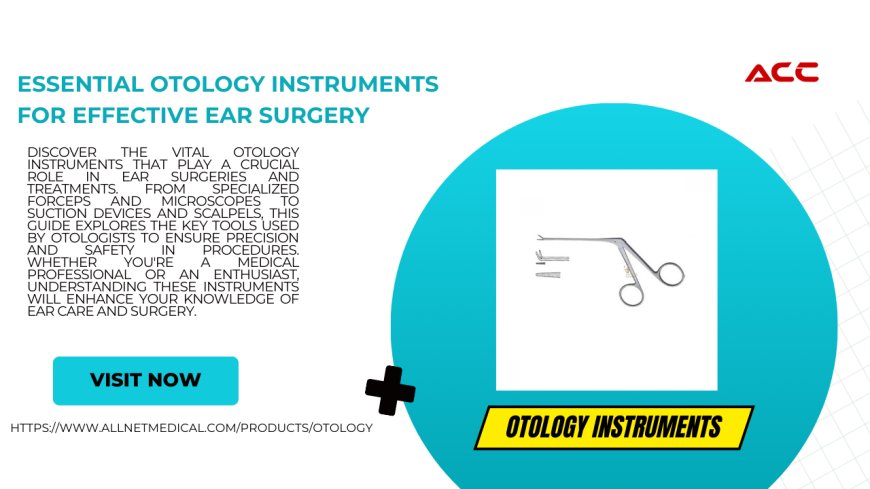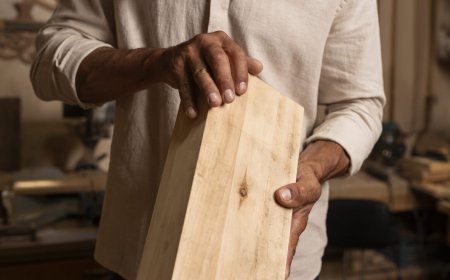Otology Instruments: A Cornerstone of Ear Health
Otology instruments play a crucial role in enabling healthcare professionals to provide effective care and improve patient outcomes.

Otology, a subspecialty of otolaryngology, focuses on the diagnosis and treatment of ear diseases. The field relies heavily on a variety of specialized instruments to accurately assess and manage ear conditions. Otology instruments play a crucial role in enabling healthcare professionals to provide effective care and improve patient outcomes.
Essential Otology Instruments
-
Otoscope: This is a fundamental tool used to examine the external auditory canal and tympanic membrane. It consists of a headpiece with a light source and a magnifying lens. Otoscopes can be either pneumatic or non-pneumatic, with pneumatic otoscopes allowing for assessment of tympanic membrane mobility.
-
Microscope: A microscope offers a high level of magnification, enabling detailed examination of the ear canal and tympanic membrane. It is particularly useful for identifying subtle abnormalities, such as perforations or fluid levels.
-
Audiometer: This instrument measures hearing acuity by presenting sounds of varying frequencies and intensities to the patient. Audiometers are essential for diagnosing hearing loss and determining the extent of the impairment.
-
Tympanometer: A tympanometer measures the compliance of the tympanic membrane and middle ear system. It helps to assess the function of the Eustachian tube and identify conditions such as otitis media.
-
Endoscope: Endoscopes are used for visualizing the internal structures of the ear, including the middle ear and inner ear. They can be inserted through the ear canal or via a surgical approach. Endoscopy is invaluable for diagnosing conditions such as cholesteatoma and otosclerosis.
-
Nasopharyngoscope: While not exclusively used for otology, nasopharyngoscopes can be helpful in examining the nasopharynx, which is connected to the Eustachian tube. This can be useful for assessing the function of the Eustachian tube and identifying potential causes of ear problems.
-
Tuning Forks: Tuning forks are used to assess hearing for specific frequencies. They can be used to perform Weber and Rinne tests, which help to differentiate between conductive and sensorineural hearing loss.
-
Audiology Booth: This sound-proof chamber is used to conduct hearing tests in a controlled environment, minimizing background noise interference.
Applications of Otology Instruments
Otology instruments are used in a wide range of clinical settings, including:
-
Diagnosis: Instruments such as otoscopes, microscopes, and tympanometers are used to diagnose various ear conditions, including otitis media, cerumen impaction, and hearing loss.
-
Surgery: Endoscopes and microscopes are essential tools for performing ear surgery, such as myringotomy, tympanoplasty, and stapedectomy.
-
Hearing Evaluation: Audiometers and tuning forks are used to assess hearing acuity and identify the type and degree of hearing loss.
-
Research: Otology instruments are used in research studies to investigate the causes and treatment of ear diseases.
Advances in Otology Instruments
Technological advancements have led to significant improvements in otology instruments. For example, digital otoscopes offer enhanced image quality and the ability to capture and store images for documentation. Portable audiometers and tympanometers have made it easier to conduct hearing tests in various settings, including schools and clinics.
In addition, the development of minimally invasive surgical techniques has increased the reliance on endoscopes and microscopes for ear surgery. These instruments allow for smaller incisions, reduced trauma, and faster recovery times.
Conclusion
Otology instruments are essential tools for the diagnosis and treatment of ear diseases. They enable healthcare professionals to accurately assess ear conditions, develop effective treatment plans, and improve patient outcomes. As technology continues to advance, we can expect to see further innovations in otology instruments that will enhance the care provided to patients with ear problems. For more information: Allnet
What's Your Reaction?





























